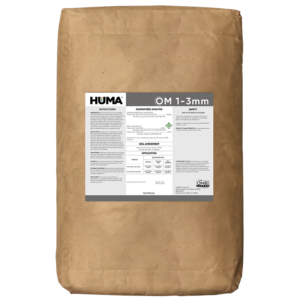MANGANESE
Benefits of Use:
- An enzyme activator that aids in chlorophyll synthesis
- Closely associated with the micronutrients copper and zinc
- Activates the lipid enzymes
- Essential for assimilation of carbon dioxide in photosynthesis
- Functions in the formation of riboflavin, ascorbic acid, and carotene
- Improves formation of lateral roots
Deficiency Symptoms—When to Apply:
- Chlorosis and/or mottling due to manganese deficiency
- Plants may be pale green to yellow-red in color between green veins on soybeans, tomatoes, and beets
- Tips of small grains turn gray to white (gray speck in oats)
- In neutral to alkaline soils high in calcium and in organic soils where manganese is less available
FAQs
Related Videos
Nutrient Requirements for Pecan Trees
Pecan grower Josh Bowman of First Fruit Orchards discusses macronutrient and micronutrient recommendations and timing for pecan trees.
Learn More
Huma® Micronutrients and Secondary Macronutrients
Huma liquid micronutrient and secondary macronutrient fertilizers with Micro Carbon Technology (MCT) are extremely efficient. MCT improves nutrient uptake so you can get the most out of your crops. Deliver micronutrients and secondary macronutrients exactly
Learn More
Related Products
Related Case Studies

Huma® Improves Alfalfa Quality In the Southwest
Background All Huma® Inc. products are based on extractions of humic substances and other materials that can stimulate plant growth and improve crop quality. Objective The objective of this field trial was to evaluate the efficacy of applying Huma® products, specifically Encapsalt®, Super Phos®, Max Pak®, 44 Mag,® Vitol®, Super Nitro®, Breakout®, Fertil Soil®, Iro-Max®,

Huma® Improves Alfalfa Soil Biology In the Southwest
Background Industrial agriculture can degrade soil quality for crops by altering the total living microbial biomass of soil. Many practices and beneficial ag products have been introduced to the market to improve soil quality. Some of these products are humic substance-based products. Objective The objective of this trial was to evaluate the efficacy of applying
Related Blog Posts

Research Report: Fertilgold® 3-2-4 and Micros I Liquid Fertilizers Increase Organic Cantaloupe Yield 120%
In this study of Fertilgold® Organics macronutrient (Fertilgold® 3-2-4) and micronutrient (Fertilgold® Micros I) liquid products compared with a grower’s standard treatment on organic cantaloupes applied under field conditions in Arizona, the Fertilgold® Organics treatment powered by a proprietary Micro Carbon Technology® resulted in a 120% yield increase with a 3-to-1 return on investment (ROI).

This Week in Ag #17
Today we commemorate one of the most important dates in history, D-Day. In 1944, the fate of the world literally depended on the success of this amphibious invasion. The bravery of our soldiers abroad – and the perseverance of our grandmothers and great-grandmothers in the factories at home – were paramount to our ultimate victory.

This Week in Ag #32
Everyone remembers where they were on September 11, 2001. One of my most vivid memories was the week after. I was farming with my dad at the time. He had just started cutting soybeans in a field owned by my wife’s family, situated next to Interstate 74 in western Illinois. I was driving to the






